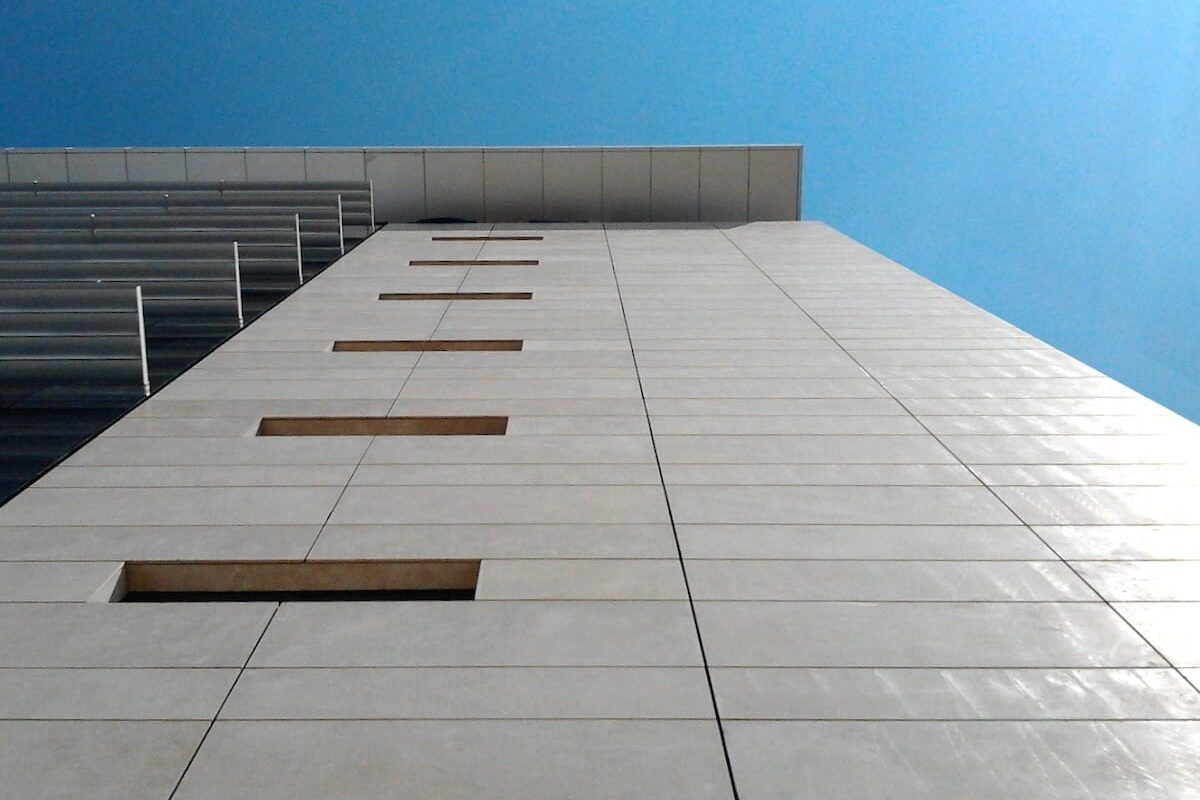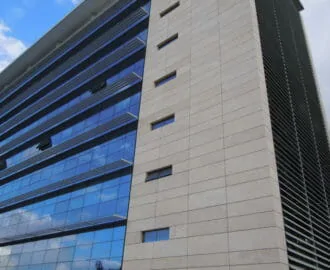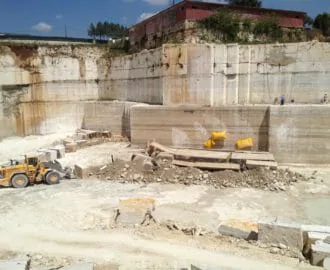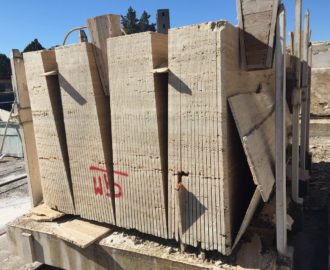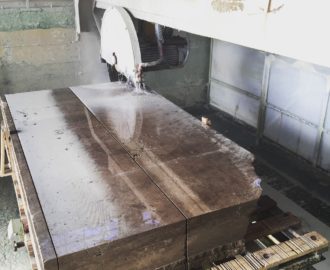Travertino: from the block to the tiles – all the processing steps
It is very nice to be able to appreciate the travertine installed on a wall or floor, to be able to admire its uniformity on the outside of a building. The warmth transmitted by this stone, the sensation given by that particular veining, which has been carefully selected among many samples and in different colours, make this stone really unique, inimitable and absolutely topical in its kind.
Being a natural stone, travertine presents itself with different variations in colour and pattern, depending on the quarrying site. This is what characterizes and emphasizes the beauty of the stone compared to a synthetic product like ceramics.
To get to the finished product, however, the steps or transformation processes that the stone must be subjected to are many and all require the use of people and machinery, starting precisely from its extraction in nature.
The processing steps are as follows: quarrying, squaring, sawing, warehousing, cutting.
The quarrying phase
The travertine quarry, especially the Roman one, is in a “hole” quarry. The ancient Romans, with their early technology, were only able to quarry the first meters of the wall or bench of travertine, which were, in fact, geologically younger and therefore softer.
Today, thanks to new technologies and new machinery, quarries have undergone numerous changes, considerably increasing the production process, but also changing the internal layout.
Thinking about the travertine quarry, we have to figure it as a big cake consisting of several layers, which are the so-called layers that make up the travertine. Each layer is clearly distinguished from the others, both in terms of colour but also in terms of veining and density. The actual quarrying phase is obtained by cutting the wall by diamond wires and a large diamond chain saw which is used to cut the base of the wall.
Once the wall is perfectly sawn and therefore free from bounds, it is pushed and dropped by pneumatic balloons. On the ground the wall will suffer several cracks, usually on the layers. Now the wall will be marked, going to mark the future blocks, which will be split manually by the operator by a pneumatic hammer.
The squaring phase
Once the semi-blocks have been prepared, a selection will be made so that they can be sent to the next processing stage: squaring.
During this phase the rough block is cleaned and squared perfectly on all its sides using a diamond wire machine.
This phase is very fast because modern wires allow a high production in a few hours.
The sawing phase
The blocks are taken to special processing work areas, where the block is cut into slabs. In these areas there are very large special machinery, installed on large reinforced concrete floor racks, equipped with a large wheel that moves a rack with dozens of diamond blades: the gangsaws. The sawing phase of a block takes several hours and requires careful “reinforcement” of the block before starting the entire production process. Once the sawing is finished, we will finally have the travertine slabs of different thicknesses, generally the thicknesses can be cm 1.5 / 02 / 03 / 04. For different thicknesses, instead of using frames, you will have to use special single-blade gangsaw.
The warehouse and cutting phase
Once the slabs have been produced, they will be stored in special areas, waiting for the final transformation phase, i.e. the cutting phase itself.
The final cutting phase, which can be an industry process or more artisan, allows to get the tile to be installed.
Conceptually, the cutting phase requires the selection of the rough slab in the warehouse and the following transformation according to the sizes to be made and the chosen finishing.
The finuture that can be obtained today are many and all of them give a further uniqueness and beauty to the travertine stone.


